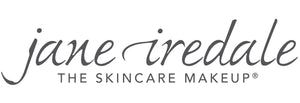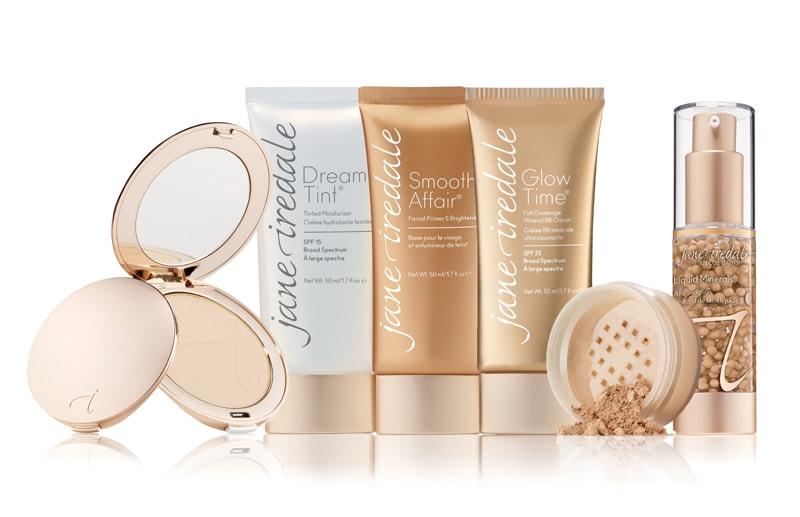Product Testing
Getting it just right. We do far more testing on our products than is required. All of our products are tested for comedogencity, sensitivity and phototoxicity. They are also dermatologist and clinically tested. You can trust them. But not all mineral makeup is created equal. It's important to look at the ingredients and the claims that are made.
Sunscreen – SPF (UVA & UVB Protection)
jane iredale conducts extensive testing of its sunscreen products to determine their efficacy in terms of UVA and UVB protection in compliance with both US FDA (Food and Drug Administration) and international requirements and testing methodologies.
US FDA
jane iredale sunscreen products have always had excellent UVA and UVB protection and pass the new US FDA final sunscreen rule “Broad Spectrum” test which measures a product’s UVA protection in relation to its UVB protection.
Only sunscreen products that pass the Broad Spectrum test and have an SPF of greater than 15 may be labeled “Broad Spectrum” and make the additional use claims: “decreases the risk of skin cancer and early skin aging if used as directed with other sun protection measures.”
Jane Iredale sunscreen products have also been tested for their water resistancy pursuant to the new final rule which only allows “Water Resistance” claims if the sunscreen remains effective for 40 or 80 minutes while swimming or sweating. The new testing techniques have resulted in a 40-minute designation for all of our sunscreen products.
International
Jane Iredale sunscreen products are also tested pursuant to various international requirements, testing methodologies and rating systems, including those established in the EU (European Union) and by the JCIA (Japan Cosmetic Industry Association).
Our testing pursuant to EU requirements has resulted in a “UVA/UVB” claim which indicates that the UVA and UVB protection of the sunscreen are provided in a minimum 1 to 3 ratio. So, for example, a product with a UVB SPF of 30 requires a UVA rating of 10.
The JCIA PA rating system (also known as the “Protection Grade of UVA” rating system) reflects a sunscreen's ability to protect against UVA rays. The PA rating system designates a PA+, PA++, PA+++ to indicate lowest to highest UVA protection. The more plus symbols the label has, the more protection the sunscreen provides against UVA rays. Our testing pursuant to the PA rating system has resulted in a PA+++ rating for our Powder-Me SPF and a PA++ rating for all of our other sunscreens.
HPLC
This is an in vitro test conducted with light rays to determine the percentage of active ingredients. It is required by some countries in order to register products claiming an SPF. The light rays measure the absorption and reflection of light in order to confirm the percentage of actives, in our case titanium dioxide and zinc oxide. It is an uncertain test but an interesting one. For example, the analysis of the test we just conducted on Warm Silk indicated an SPF 37.
Stability Test
This measures shelf life. The product can be tested in real time, provided the product has been in the line long enough, or it can be measured through an incubation process. This subjects the product to intense heat and cold for a period of one month. This acceleration is equal to one year. All of our products have undergone this test and where possible, the real time test.
PAO (Period After Opening)
It is now a requirement of the EU that all boxes and labels contain the symbol of an open jar with the number of months the consumer can expect to use the product at its optimal performance. This is a subjective test with no defining rules. However, the object is to be able to convince regulatory authorities that the manufacturer can back-up the period it advertises. We sent to the laboratory powder bases that we have had in our makeup room for four years or longer and that have been used periodically during that time. We tested five pressed powders and three loose powders. In every case, there were no microorganisms. We could back up a 48 month PAO, but have decided to print 24M (24 months) on the box. We have been advised to choose a lesser time so that it doesn’t appear out of place to the customs authorities. All other products, except D20, Balance and POMMISST have a PAO of 12 months. We firmly believe that all our mineral powders have an indefinite PAO.
Best Used By
We are printing a “Best used by…” date on D20, Balance and POMMISST. Date will be one year from filling. This doesn’t mean that the product is harmful after that date but that it is optimum during the first year. If any change is discernible, it would be in the lessening of the fragrance.
Repeat Insult Patch Test
This is a sensitivity test conducted on 50 people per product. This is two-phase test which tests irritancy and sensitivity. During the first phase, the test is repeated three times on the same subject within a week. There is a ten to fourteen day break and then the subject is patch-tested for three consecutive days. There is a 24-hour evaluation and 48-hour evaluation. In every case, the results of being tested with our products were negative. No sensitivity was recorded to any of the products. The legitimate claims we can now make are: Dermatologist Tested. Non-irritating. Safety Tested. Allergy Tested. Clinically Tested. Hypoallergenic.
PET - preservative efficacy testing
Preservative Efficacy Testing also known as Preservative Challenge Testing is performed on each product to prove the efficacy of the product’s preservative system to stop and prevent the growth of microorganisms. In a laboratory, the product’s preservatives are challenged by introducing microorganisms, including various bacteria, yeast and mold, into the product.
Over a period of time, samples are tested at different intervals to determine the survival of the organisms.
When the testing of our products is concluded no microbial activity is detectable.
Voluntary Testing
human repeat insult patch test (HRIPT)
We voluntarily test our products for irritancy and sensitivity using the Human Repeat Insult Patch Test (HRIPT). The claims we can make are: dermatologist tested, non-irritating formula, allergy tested, clinically tested, and hypoallergenic.
The HRIPT is a two-phase test conducted on fifty people per product. During the first phase, the test is repeated three times on the same subject within a week. There is a ten to fourteen-day break and then the subject is patch-tested for three consecutive days. There is a 24-hour evaluation and 48-hour evaluation.
In every case, the results of being tested with our products were negative. No sensitivity recorded to any product. The claims we can make are:
- dermatologist tested
- non-irritating formula
- allergy tested
- clinically tested
Comedogenicity
All of our products, except for lip and eye makeup, have undergone comedogenicity testing and shown to be non-comedogenic. Non-comedogenic products are less likely to clog pores and cause acne and are more suitable for sensitive skin.
Like the HRIPT test, comedogenicity testing is not required. We choose to perform this testing to ensure that our products are suitable for sensitive and acneic skin.
Heavy Metals
Heavy metals are ubiquitous in the environment and are found naturally in rocks, soil and water and therefore may be found in minerals, pigments and other raw materials used in cosmetics. Even after they are properly processed and purified under lab conditions, very low amounts, known as trace levels, may still be detectable in these ingredients or products. Testing allows us to detect heavy metals at very low levels and depending on the laboratory, technology utilized and material tested, these are measured in either parts per million or parts per billion. A detection of 1 ppm would represent .0001% of the total product formula.
We test all of our products for Mercury, Arsenic, Lead and Cadmium. If any trace amount of a heavy metal is detected it is below the permissible levels for cosmetics recommended by international public health agencies.
Photo Toxicity Testing
All of our sunscreen products and those products containing citrus extracts have been tested for phototoxicity. The phototoxicity testing we have conducted has confirmed that our products are non-phototoxic. The test results have shown that no adverse effects or unexpected reactions of any kind were observed on test subjects.
In the U.S. phototoxicity testing of products is voluntary. Phototoxicity, also known as photosensitization, is a toxic reaction brought on by a phototoxic substance exposed to sunlight. It causes the skin to be more sensitive to ultra violet light and usually appears as a very deep sunburn. Most common phototoxic ingredients in cosmetics are citrus-based. The actual agents causing this sun sensitivity are known as furocoumarins. We use distilled citrus based extractions in our products except for our lemon peel oil which is cold pressed.
Conclusion
Jane Iredale has conducted tests not required as a cosmetic manufacturer, but it has done so because it believes in offering you the highest quality product line possible.








